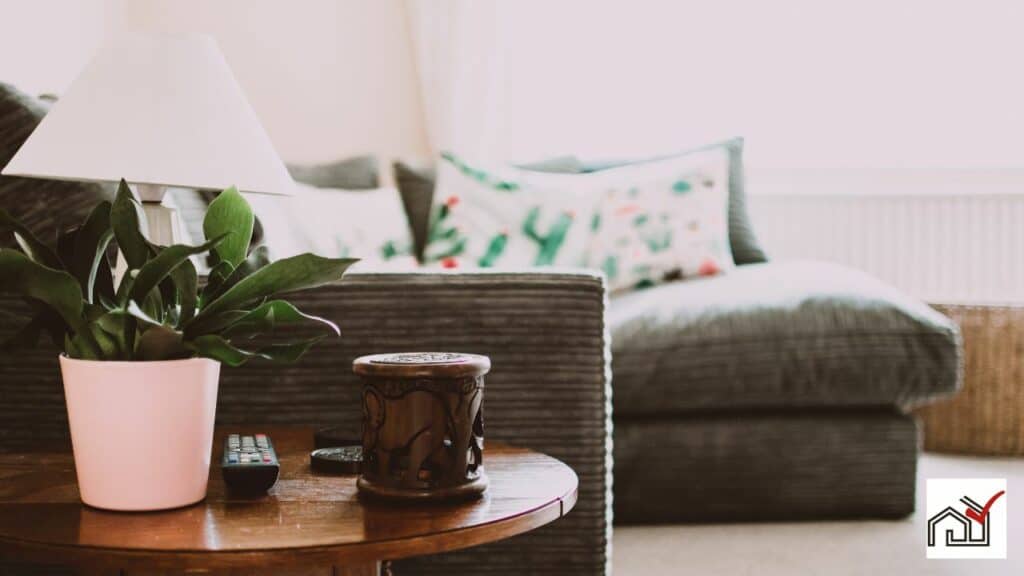The number of end tables needed in a living room depends on the room's size, seating layout, and the users' needs. Typically, one or two end tables are placed beside a sofa or next to armchairs.
Larger living rooms or spaces for entertaining may require more end tables for convenience and comfort. The choice should balance function with the room's style.
Understanding End Table Functionality
End tables are functional pieces of furniture in living rooms, acting as surfaces for items and contributing to storage and decor. These tables, placed next to sofas and chairs, allow easy access to drinks, snacks, and books. They are essential for convenience and reduce the need to get up frequently.
Side tables, similar to end tables, provide additional space for lamps, which enhances room lighting and ambiance. The number of end tables needed depends on the size of the room; smaller spaces may need only one, while larger rooms might require multiple tables for accessibility.
End tables can also display decorative items such as photos and vases, adding a personal touch to the room. Built-in drawers or shelves offer storage, helping to keep the space organized and tidy.
Recognizing end tables as key to a well-designed living room can improve both function and aesthetics, ensuring these pieces are effectively used in the home.
Assessing Room Size and Layout
When determining how many end tables to include in a living room, it's important to consider the size of the room, its layout, and the existing furniture. In larger living rooms, you can often accommodate more end tables without making the space feel cluttered. In contrast, smaller rooms may require fewer end tables to avoid a cramped appearance.
The layout significantly influences the number of end tables needed. If the room has multiple seating areas, you might need more tables to ensure that each area has a surface for guests to place drinks or other items. However, if the living room has a single seating arrangement, one or two end tables may suffice.
The size of the seating and other furniture should guide the proportion of end tables. They should fit comfortably within the room, allowing for easy movement. End tables should add to the room's functionality and aesthetic without disrupting the flow of the space.
Determining Seating Area Needs
In a living room, the number of end tables needed depends on the seating arrangement and room size. End tables are functional, providing space for items like lamps and drinks. A typical layout includes an end table on each side of a sofa, allowing easy access to various items for those seated. In larger rooms with more seating, additional end tables may be necessary to provide the same convenience.
The room's size affects how many end tables can fit without overcrowding. Small rooms might only have space for one, while larger rooms can accommodate several. It's important to keep the space proportional and avoid obstructing movement with too much furniture.
Choosing the right number of end tables involves considering the room's size, the seating configuration, and the tables' intended use. End tables should enhance the living room's comfort and appearance while serving the users' needs.
Considering Style and Aesthetics
When selecting the right number of end tables for a living room, consider how they will match the existing decor. End tables function as both practical furniture and decorative pieces. It's important to choose end tables that fit the room's design, considering their shape, color, and material.
Different end table styles can affect the room's atmosphere. Traditional wooden tables with dark finishes can give a room an elegant feel, while modern designs with simple lines and metallic details can complement a contemporary space. Choose colors that either blend with the room's color scheme for a unified look or contrast with it to make a bold statement.
The size of the end tables should be in balance with other furniture. Too large end tables can dominate a space, and too small ones may seem insignificant. The tables should be proportionate to the seating furniture and functional.
Balancing Quantity With Practicality
The right number of end tables for a living room depends on a balance of function and aesthetics. Each seating area should have at least one easily accessible surface, such as an end table, to enhance comfort and convenience. In larger rooms, multiple end tables can fit without making the space feel too crowded. These tables should match the style of the central coffee table and not overshadow it.
The arrangement of end tables must allow enough space for movement around seating areas. In smaller rooms, fewer or smaller end tables are better to prevent a cluttered look. The final count of end tables should suit the room's size and the users' needs, ensuring a functional and visually pleasing living space.





